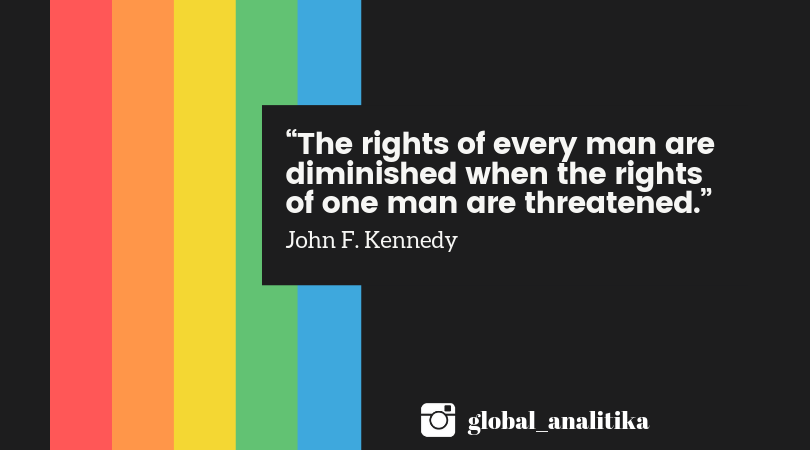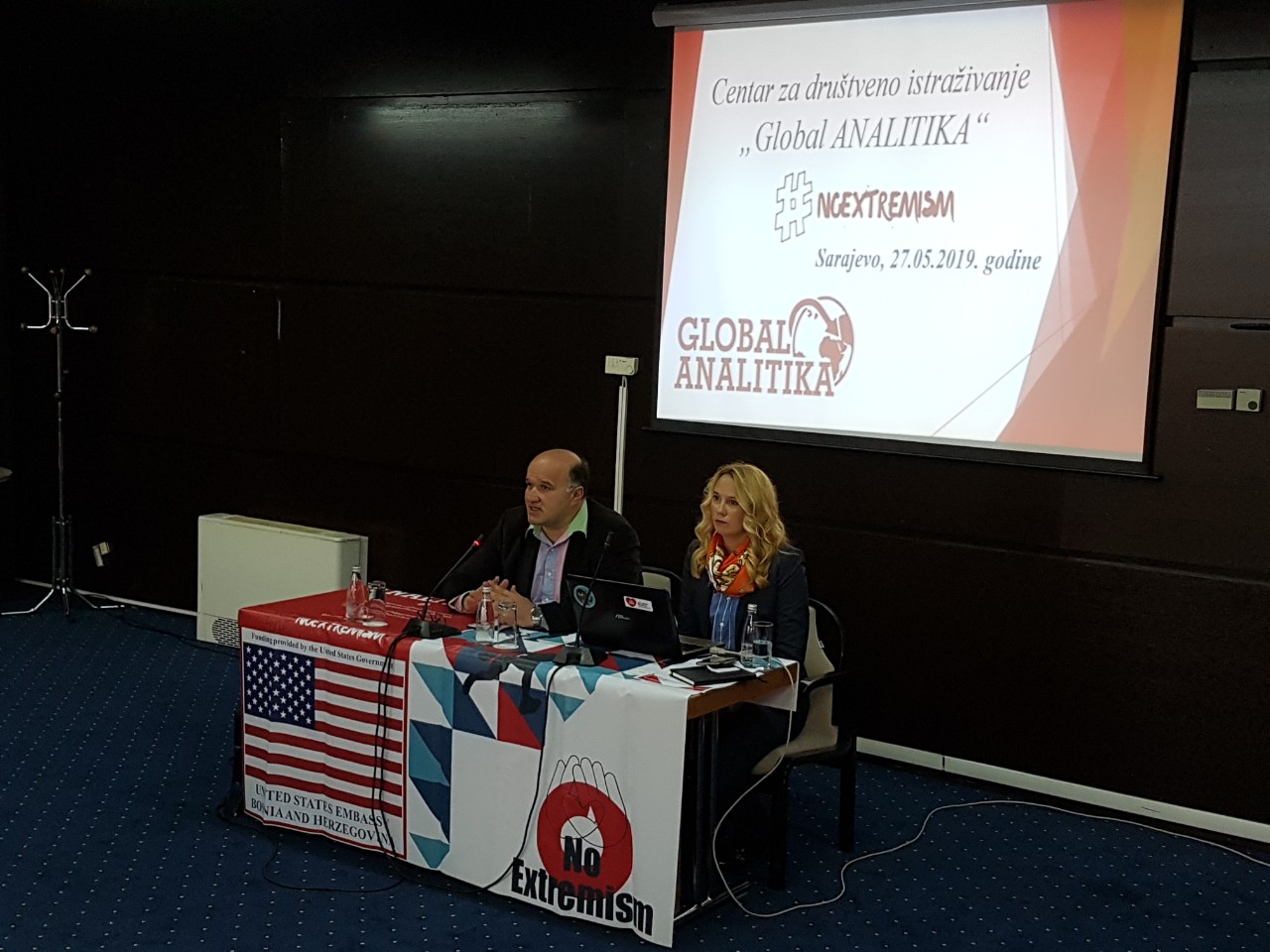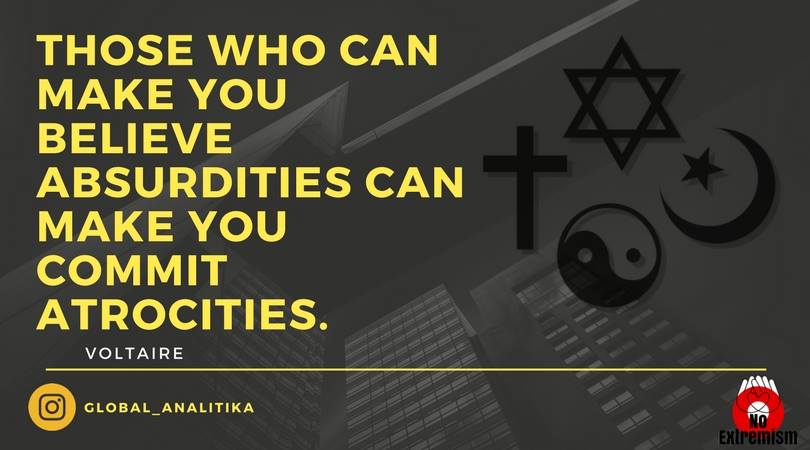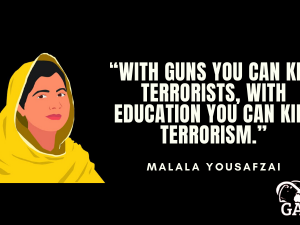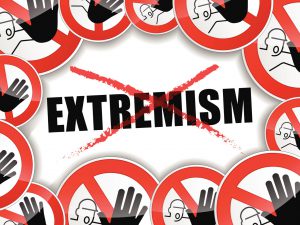In recent years, in the world public, both professional and general, the term “violent extremism” is often present, to whom is mainly added the term radicalism, which, although sometimes contextually, does not belong to it. In general, it can be stated that these are general terms that imply violent ideas and illicit acts that are generally inspired by some secular, political, religious or social ideology. Unfortunately, in the colloquial sense, these terms are reduced to their religious ideologies, specifically, that refers to the concept of radicalism, as a rule, if it is used by incompetent people. It is often ignored the fact for a great number of organizations, groups or political parties that have been formed on the extreme right-wing ideology, furthermore, that their narrative has been built on hate speech against religious freedom, refugees, LGBT people, etc. Rhetoric, of any kind, that degrades an individual or a certain group of people and thus legitimizes and approves potential violence against it, in the sense that it encourages or attributes only to one of the groups of ideologies, for example, religious.
It is clear that violence, as evil, does not belong to any religion. It (religion) condemns it and considers it to be the perversion of human consciousness. In the theological sense, the source of evil is human, not God. Religion protects the five fundamental values: the sacredness of human life (God gives life and only He can take it away), freedom of religion, family, property, and honor. Christians see love and peace in the personality of Jesus Christ. The Muslims read in the Qur’an that all men are made of one man and one woman and that they are divided into different groups to get acquainted, they call God by one of His Names – Peace and Merciful, and in the personality of Muhammad, they see the one who imparted equality among identically different groups of people and stopped the bloodshed among them.
Religion teaches that God requires people to build peace among themselves and to live peacefully with each other. That is why we may wonder, is God really pleased with the intention of ISIS members to “establish” peace by violent, dehumanizing and unlawful means? What kind of the peace is that, if it’s achieved by violent and brutal methods? Can this even be called peace?
We deliberately use the term of religious ideology because these are superficial and abused forms of understanding of religion in order to support or justify the procedures that will lead to the realization of interests (usually political). They must be legally opposed while paying attention to respect for human rights and freedoms. If the previous century is marked by territorial wars, current events in the world indicate that the 21st century will mark the struggle for winning human souls, which is a very hard-laboring and complex job. If we want to prevent “brainwashing” and associating young people with any kind of religious or secular ideology, then we all must sincerely and systematically, from individual to national and international levels, contribute through all segments of human activity. It is crucial to work on improvement of economic and social equality, the quality of education and inclusion of marginalized categories, establishment and reform of fair, efficient and well-regulated state apparatus – public administration, combating corruption and many other forms of structural and cultural violence – which is one of the causes and the fertile ground for the frustration, awakening and outbreak of phenomena that imply a violent character.
Abuse of religion and connection with violent extremism and radicalism
Violent extremism and radicalism associated with religion can be seen in two forms: the radicalism induced by the violent, rigid and reductive understanding of religious teachings (which can lead to the emergence of sects, enslavement, and movement) and the second, radicalism inspired by external, i.e. non-religious motives (winning political support, poverty, repressive state politics, marginalization, injustice, violation of rights, media propaganda, etc.). Both forms can be turned into acts of violence that, in order to morally justify, they are trying to “muddle” under cellophane religion (this is mostly done by ideologies). They (ideologies) often find their cover under the first form of radicalism (internal) and they could not succeed without it. Why?
Because justification and incitement to violence, as we have said, cannot originally be found in religion as such, except to decontextualize some of its allegations and give them an incorrect meaning, which would justify this violence.
What follows from this interpretation is that authorized religious authorities and communities need to strive more to deal more with forms of radicalism caused by, inter alia, internal factors, giving proper interpretation and understanding of religion (in order, for example, to take away the argument of ‘divine justification’ from terrorist organizations), while the relevant state institutions should deal with these other – non-religious motives, which are the most numerous and at the same time the most responsible causes of violence.
Religion is not the primary driver of violence, nor can it be perceived as a kind of trigger, although in some cases it was brought into a relationship and was noticeable. Given that in some cases, extremist groups and individuals manage to misuse religion and in it find inspiration for the evil that they do, conditionally, in some of the concepts, religion is designated as the driving force of violent extremism. So some of the most brutal attacks such as the terrorist attack on the United States on September 11, 2001, the terrorist bombing of a train in Madrid, the Anders Behring Breivik terrorist attack in Norway and, unfortunately, many other such religiously motivated mass killings show how common is abuse of religion to justify and encourage the killing and terrorizing of people everywhere in the world. Historically, religion was also used as a “reason” to commit genocide against Jews in Europe. About six million Jews were massacred in the Nazi hate campaign and murders during World War II. In this case, it is not the religion itself that committed the “abuse”, but others misused religion as a specific means of identifying and directing attacks and killing a minority, in this case Jewish. Also, religion was at the heart of the intense war between Catholics and Protestants in France at the end of the 16th century. About 3 million people were killed in fights, which lasted more than 30 years.
One of the terrorist organizations that are often linked to the religious aspect of terrorism is Boko Haram, whose brutal campaign in northeastern Nigeria has led to the killing of more than 7,000 people. However, the results of a UN survey on a sample of 600 members of this terrorist organization and the terrorist group al-Shabaab are very interesting. According to these results, more than half of the respondents identified religion as the reason for joining an extremist group, but 57 percent of them did not read religious texts or understood very little. The study was based on interviews conducted between 2015 and 2017 in six countries, including Kenya, Nigeria, and Somalia, mostly in detention facilities, and showed that most respondents voluntarily joined these terrorist groups.
Many debates that were conducted after the terrorist attack 11.09.2001. aimed to answer the question of the causes of violent extremism and radicalism. Some answers have been answered mainly in the sense that these are the possible causes factors: poverty, hopelessness, and ideology. US Deputy Secretary of State Tony Blinken said, So here’s what we know, there is no single type of violent extremism, no single method of recruitment, no single source of motivation or support, there’s no single story, no easy synonym for one region, religious tradition, or culture… In short, the nature and range of possible drivers of violent extremism can vary greatly.“[1]
Most often, non-religious motives bring an individual or group to a point where they are willing to think about the use of violence, but they need an additional incentive to justify and legitimize their actions, which they would otherwise regard as illegitimate. In this finding of justification and “moral duty” (from God), most often resort to religion in order to “overcome” the legal, human frames. Shiv Sena, an extreme right-wing Indian political party ideologically based in the Hindutva or Hindu nationalist movement, is an example in which the religious framework is used to gather and sometimes literally fight for political goals, including in this case the project “Clean India for Hindus”. Violent extremist groups can often instrumentalize religious narratives to transform a conflict that arises from conventional political factors into something that needs to be understood as having a huge, transhistoric – perhaps even eschatological significance. Thus, for example, some Israeli group of settlers who have usurped someone else’s land-based their violence on the Scriptures (“The Promised People in the Promised Land”).[2]
There are many extremist groups in the world who, for the realization of their own ideas and goals, invoke religion and base their ideological support on it, whether it is Islam, Christianity, Brahmanism or Buddhism.
When discussing the relationship between secular and religious institutions it is possible to explore three broad issues:
- Present a challenge to the concept of a moderate or “modern approach” to religion. Which does not mean changing religious principles in favor of secular, but indeed redefinition and review of the understanding of religious origin in accordance with time and space. For example, such tendencies in Islam began at the end of the 19th, the beginning of the 20th century.
- Find the possibility of strengthening the role of representatives of religious communities as credible ”voices” and the relevant authorities in the process of prevention and countering violent extremism, because they, in fact, can be of great help.
- Concerns about the unskillful (harmful) use of religious language (expert terms) and concepts in the media, the messages of government officials towards the expert public. An example of this is the use of the term Jihad, which in principle in Islamic terminology has a positive meaning.
This relationship between secular and religious institutions is, in spite of all the advances, still often ignored, although there are many binding documents, from national to UN documents and resolutions. For example, the First Amendment to the United States Constitution prohibits the government from occupying positions within one or some other religions and using religious narratives. What suggests that state actors cannot at all be credible voices when it comes to interpreting religion and its teachings. If states want to seriously deal with the prevention of violent extremism, then their officials and politicians must stumble from the use of such a narrative. Sensitivity to this problem has already been proven in a number of examples in Bosnia and Herzegovina, in which this narrative is massively used to collect cheap political points, forgetting that there is a huge scale of damage that leads to a further and deep division of the population in BiH.
Conclusion
From all of the above, it is clear that the problems of violent extremism and radicalism are very complex and unpredictable. Causes, roots, and motives can be diverse and change according to time and context. Prevention requires a serious and comprehensive approach from individuals, non-governmental organizations, and the media to government officials, institutions, and legislation. So within this and the religious aspect of violent extremism and radicalism, is not and cannot be in the exclusive competence of religious communities and their authorities.
It is evident that religious leaders can do often more than religion itself. It would be wrong to have their role reduced only to the theological antithesis of extreme teaching. The role of religious leaders in the prevention of violent extremism can go beyond the boundaries of religious spaces and churches, and in this case, it is desirable. It remains room for them to be part of a wider civil society, and through forms of public consultation to participating in developmental projects and programs dealing with corruption, socio-economic weaknesses, mediation in conflicts, peacebuilding and other forms of life that have violent dimension.



